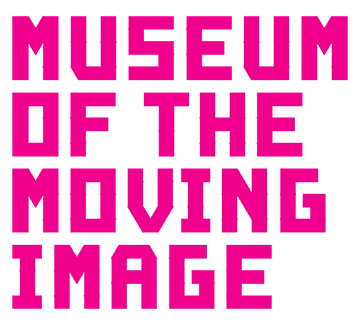
Photo by Thanassi Karageorgiou
EXHIBITION
36 Bars
Jul 18, 2017 — Jan 7, 2018
Location: Amphitheater Gallery
2002. John Divola (b. 1949, Los Angeles. Lives and works in Los Angeles). 36 found 8×10-inch photographs, c. 1928–1933. Collection of Stéphane Samuel & Robert Rubin.
In the 1980s, Los Angeles photographer John Divola began collecting photographs that were made during Hollywood productions and later discarded. The 36 photographs on exhibit here were found in a small poster shop behind a flower store on Sunset Boulevard. They had been retrieved from a dumpster by a long-time Warner Bros. employee. These incredibly detailed images, dating from circa 1928–1933 and made with 8×10 cameras, were made solely to provide records of movie sets for continuity during production. As found objects, their aesthetic beauty challenges the distinction between fine art photography and the craftsmanship of Hollywood technicians. These photographs also remind us of the power of movies to create ideas of how certain spaces should look and feel. Hollywood production designers and directors take an abstract concept—such as a bar—and realize it with great specificity. Indeed, Divola reminds us that specificity of visual detail is the defining characteristic of photography. —Chief Curator David Schwartz
Artist statement:
Set stills are photographs taken of motion picture sets to aid in the preservation of filmic continuity. Occasionally, for a variety of reasons, a scene will need to be reshot, or added to, and these pictures provide a record of where things were placed and how they were lit. In most of these scenes placards were included to specify the director, film name, and location. Some years ago I began to collect Hollywood set stills simply because I considered them fascinating and beautiful. These photographs are contact-prints from 8×10 inch negatives and are, in terms of craft alone, exceptional. They also intersect with my own work as an artist, which has involved photographing scenes specifically fabricated for the camera, and has often addressed issues of absence.
Films featured in 36 Bars:
20,000 Years in Sing Sing, 1932, Warner Bros. Directed by Michael Curtiz. Art director, Anton Grot
Alias the Doctor, 1932, Warner Bros.. Directed by Michael Curitz. Art director, Anton Grot.
The Mayor of Hell, 1933. Warner Bros. Directed by Archie Mayo. Art director, Esdras Hartley.
Girl Missing (a.k.a. The Blue Moon Murder Case), 1933. Warner Bros. Directed by Robert Florey. Art director, Esdras Hartley.
Children of Pleasure, 1930. MGM. Directed by Harry Beaumont. Art director, Cedric Gibbons.
Doctor X, 1932. Warner Bros. Directed by Michael Curtiz. Art director, Anton Grot.
Fast Life, 1929. Warner Bros. Directed by John Francis Dillon. Art director Cedric Gibbons.
Five Star Final, 1931. Warner Bros. Directed by Mervyn LeRoy. Art director Jack Okey.
Frisco Jenny (a.k.a. Common Ground), 1932. Warner Bros. Directed by William A. Wellman. Art director Robert M. Haas.
High Pressure (a.k.a. Le Bluffeur),1932. Warner Bros. Directed by Mervyn LeRoy. Art director, Anton Grot.
Lawyer Man, 1932. Warner Bros. Directed by William Dieterle. Art director, Esdras Hartley.
Play Girl (a.k.a. Love on A Budget/Eight to Five), 1932. Warner Bros. Directed by Ray Enright. Art director, Esdras Hartley.
The Mind Reader, 1933. Warner Bros. Directed by Roy Del Ruth. Art director, Robert M. Haas.
The Mouthpiece, 1932. Warner Bros. Directed by James Flood, Elliott Nugent. Art director Esdras Hartley.
The Purchase Price (a.k.a. Night Flower), 1932. Warner Bros. Directed by William A. Wellman. Art director, Jack Okey.
One Way Passage (a.k.a. SS Atlantic), 1932. Warner Bros. Directed by Tay Garnett. Art director, Anton Grot.
Private Detective 62 (a.k.a. Man Killer/Private Detective), 1933. Warner Bros., Directed by Michael Curtiz. Art director, Jack Okey.
The Public Enemy, 1931. Warner Bros. Directed by William A. Wellman. Art director, Max Parker.
I Loved a Woman (a.k.a. Red Meat), 1933. Warner Bros. Directed by Alfred E. Green. Art director, Robert M. Haas.
Riders of the Dark, 1928. MGM. Directed by Nick Grinde. Art director unknown.
Safe in Hell (a.k.a. The Lost Lady/Lady from New Orleans), 1931. Warner Bros. Directed by William A. Wellman. Art director, Jack Okey.
Silver Dollar, 1932. Warner Bros. Directed by Alfred E. Green. Art director, Robert M. Haas.
The Last Flight (a.k.a. Spent Bullets/Single Lady), 1931. Warner Bros. Directed by William Dieterle. Art director, Jack Okey.
The Rich Are Always with Us, 1932. Warner Bros. Directed by Alfred E. Green. Art director, Jack Okey.
Winner Takes All, 1932. Warner Bros. Directed by Roy Del Ruth. Art director, Robert M. Haas.
